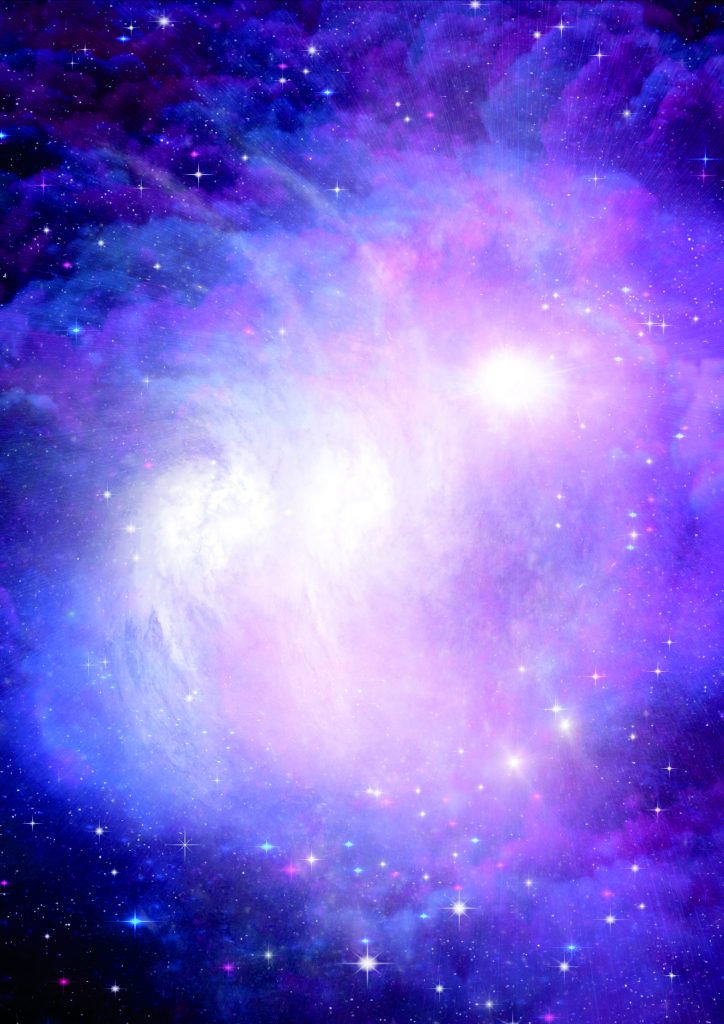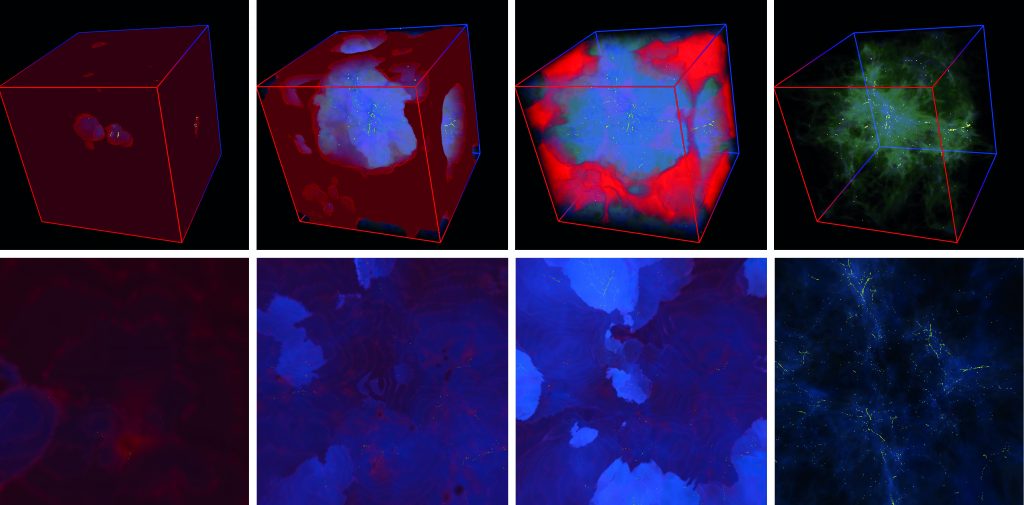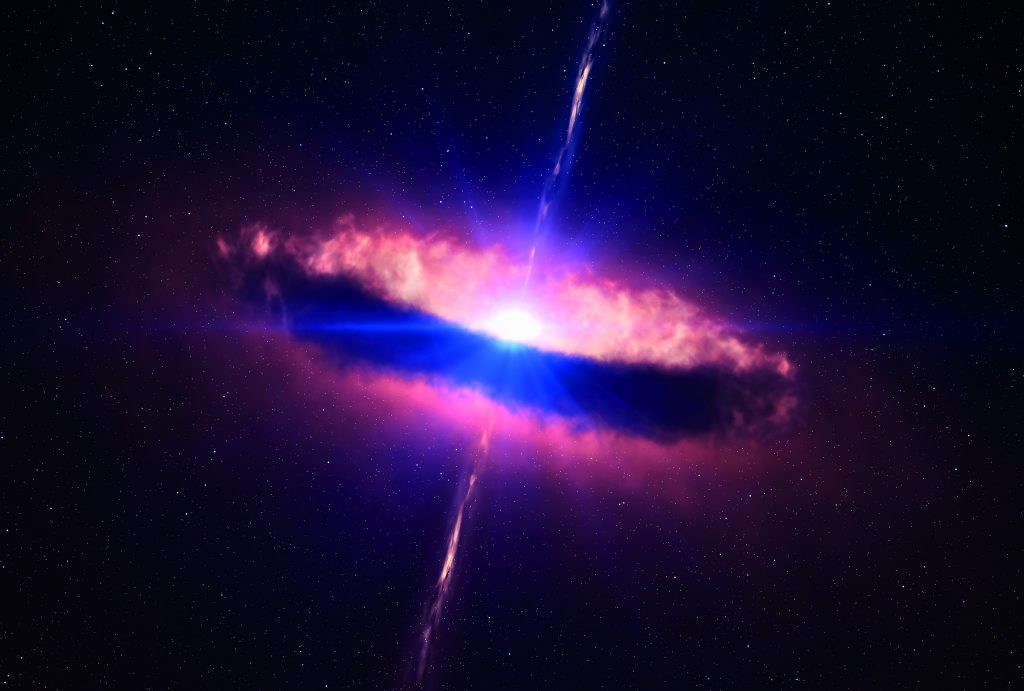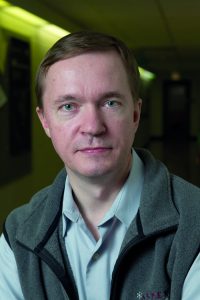Dr Nick Gnedin – The CROC Project: Understanding Reionisation in the Early Universe
Hundreds of millions of years after the Big Bang, charged, ‘ionised’ particles not seen since the earliest ages of the universe began to re-emerge. Named ‘reionisation’, this event was crucially important in the history of our universe – but because it occurred so far back in the past, telescope observations can only offer astronomers limited clues about how it unfolded. In his research, Dr Nick Gnedin at the Fermi National Accelerator Laboratory uses advanced computer simulations to study reionisation. His team’s project, named ‘Cosmic Reionization On Computers’, or CROC, now offers a key resource to researchers studying this distant period.
From the Big Bang to Reionisation
In the earliest years following the Big Bang, temperatures throughout the universe were so hot that protons and electrons could only exist ‘apart from each other’ in a dense, opaque plasma – continually scattering off one another whenever they met. After around 400,000 years since the Big Bang, conditions became cool enough for these particles to combine into neutral hydrogen atoms, in an event which cosmologists now call ‘recombination’.
For another 500 million years afterwards, almost all matter in the universe existed in this form. Since hydrogen atoms only emit light extremely rarely, the universe was almost entirely devoid of light at this time, and entered a period named the ‘dark ages’. However, this situation would not last.
Under their mutual gravitational attraction, hydrogen atoms eventually clustered together to form dense clouds: structures that would eventually become the first stars and galaxies. As these newly-formed bodies radiated energy in the form of photons, hydrogen atoms were again stripped of their electrons, forming ionised plasmas once again. This period was named ‘reionisation’, and was a crucial turning point in the history of the universe.
Even today, however, cosmologists don’t fully understand how the event unfolded. Since the earliest galaxies lie many billions of lightyears away from us, even the most advanced telescopes available today cannot study them in sufficient detail to answer many pressing questions.

Discrediting Theories of Backreaction
At the onset of reionisation, the most immediate effect was for ionised gas to be expelled from newly formed galaxies. In the year 2000, a new theory emerged which proposed that this expulsion must have fundamentally altered the course of star formation across the universe.
This theory of ‘backreaction’ gained traction over the following years, but wasn’t without controversy. Among its opponents were cosmologists who argued that the influence of gas expulsion couldn’t have been strong enough to alter star formation in such a significant way. Without any way to acquire telescope images with suitably high resolutions to capture such early star formation, the debate came to a standstill.
In a 2014 study, Dr Nick Gnedin and his colleagues at the Fermi National Accelerator Laboratory took a new approach: putting the theory to the test using the newly designed ‘Cosmic Reionization On Computers’ (CROC) project. Instead of relying on observations, their technique recreated the conditions of the early universe entirely virtually.
‘The project included simulations on Mira supercomputer at Argonne National Lab and on Blue Waters at the National Centre for Supercomputing Applications,’ Dr Gnedin describes. ‘The total scale of the project was one of the largest computational projects in astrophysics, and remains the most accurate and realistic simulations of cosmic reionisation to date.’
With such advanced capabilities, Dr Gnedin’s team could use CROC to resolve the long-standing debate over the validity of back-reaction. Their simulations showed that galaxies with gas content that could be affected by photon-induced ionisation contained little star-forming gas in the first place. As a result, reionisation must have had little effect on early star formation within galaxies.
Already, the team had clearly demonstrated the capabilities of their techniques in testing the viability of cosmological theories – yet the advances made through the CROC project were only just beginning.
Outside-in or Inside-out?
Alongside backreaction, another long-standing debate also emerged in the early 2000s: this time stemming from an uncertainty as to whether reionisation first occurred in regions of high or low density in the early universe. One model argued that since lower density gases contain fewer atoms, fewer photons would have been required to ionise them. Hence, reionisation must have occurred first in these regions.
This idea was called the ‘outside-in’ theory: since it predicted that denser gases elsewhere in the universe must have been ionised later. In contrast, the ‘inside-out’ model argued that reionisation must have taken place the other way around. Since light-emitting stars and galaxies must lie in high-density regions, the gas surrounding them must have been ionised first – before the lower density material outside.
Without any possibility of observational proof, any debate between the proponents of both models eventually came to a standstill. That was until 2016, when Dr Gnedin and his colleagues provided a breakthrough. ‘For over 10 years there was no consensus among astrophysicists studying reionisation which of the two models is more relevant to reality,’ he recounts. ‘CROC simulations were instrumental in resolving the dilemma: with high density gas around galaxies and quasars indeed being ionised first, and the low-density gas second.’

Stills from animations showing volume rendering of neutral hydrogen density (opaque fog), dense ionised hydrogen (blue), plus galaxies (yellow dots)
Resolving the Debate
At first glance, this conclusion may appear to validate the inside-out model over the outside-in. However, the full picture is more complex: at the time of reionisation, hydrogen atoms had had little time to gravitationally accumulate, meaning that fully-formed galaxies were exceedingly rare. Instead, gas was often sculpted into long, thin filaments, which were not quite dense enough to collapse into galaxies. CROCS simulations have now shown how these filaments created a third type of gas with an intermediate density, which ionised after both high- and low-density gases.
‘Our main conclusion was that both models are mostly right, and also a bit wrong,’ explains Dr Gnedin. ‘They are right in describing a particular stage of reionisation: it starts as inside-out and ends as outside-in. Yet neither of them describes the full process, which can only be captured in complex simulations on the largest existing supercomputers.’ In uniting the mathematics of both theories, CROCS simulations again led to an answer that could not be provided by direct observations – representing a crucial step forward in astronomers’ understanding of the early universe.
Looking into Quasars
Some particularly interesting clues about the nature of reionisation can be gleaned from structures named quasars. These extremely bright galactic cores emit vast amounts of radiation across the electromagnetic spectrum: directing it out along the rotation axes of the supermassive black holes at their centres. If this radiation happens to point towards Earth, astronomers can use it to learn more about the space between us and its origin, by measuring the wavelengths of light that have not been absorbed during its voyage. In this case, Dr Gnedin and his colleagues discovered that this non-absorption of light from quasars must be due to galaxies that cross our line of sight.
Previously, telescope observations have shown that the more distant the quasar, the more of its radiation must be absorbed by the cosmic gas filling the space. ‘The phenomenon is related to reionisation,’ explains Dr Gnedin. ‘The further we look into space, the further we look back in time: and hence, the most distant quasars probe the time of reionisation. Because the universe was more opaque back then, more of the quasar light has been absorbed, and less is able to reach us.’
Yet this doesn’t explain the full picture: in the sightlines of more distant quasars, astronomers can also observe regions far brighter than their surroundings, named ‘transmission spikes’.

Identifying Transmission Spike Sources
In a 2019 study, Dr Gnedin’s team used simulations from CROC to determine how the number of observed transmission spikes relates to quasar distances – enabling them to study the origins of these spikes in more detail. By accounting for the interplay between radiation, and the fluid motions of charged plasma, they discovered that these brighter regions are generated by the galactic neighbours of quasars. ‘For the quasar light to pass through a highly opaque universe, it needs help of nearby galaxies to produce more ionising radiation,’ Dr Gnedin explains. ‘This over-ionises the gas around them, thus making that gas more transparent.’
As a result, the brightness of a transmission spike must relate to both the density of gas in these galaxies, and the fraction of their gas that can become ionised. Unfortunately, present-day telescopes don’t have high enough resolutions to confirm this prediction through direct observations – but Dr Gnedin’s team hopes that this will soon change. As astronomers hope to interpret potentially vast amounts of future data, the team’s simulation results will likely be critical to understanding the physical processes involved.
Continuing with Better Telescopes
The next decade promises to be an exciting time for astronomers and cosmologists. As technological advances enable engineers to build near-perfect arrays of mirrors on far larger scales, reflecting telescopes both on land and in space will soon be able to collect far more light than their predecessors. This will enable them to produce images with unprecedented resolutions – helping researchers to gather images of far more distant structures than ever achieved previously.
‘The next generation of optical telescopes – including the Giant Magellan telescope, the Thirty Meter telescope, the European Extremely Large Telescope, and the James Webb Space Telescope, will multiply the existing samples of distant galaxies 10 to 100-fold. That means there is going to be an immense amount of observational data just in a few years,’ Dr Gnedin concludes.
By adapting CROC’s simulation parameters to better match these observations, Dr Gnedin and his team will provide an invaluable resource for researchers aiming to verify and discredit certain theories about the nature of reionisation. Ultimately, these efforts will help astronomers and cosmologists to gain a better understanding of how the universe as we know it today came to be.
Reference
https://doi.org/10.33548/SCIENTIA659
Meet the researcher

Dr Nick Gnedin
Cosmic Frontier Center
Fermi National Accelerator Laboratory
Batavia, IL
USA
Dr Nick Gnedin completed his PhD in Astrophysics at Princeton University in 1994. Following positions as a postdoctoral researcher at both MIT and the University of California, Berkeley, he joined the faculty at the University of Colorado, Boulder, in 1998. Since 2005, he has been a Senior Scientist at the Particle Physics Division of the Fermi National Accelerator Laboratory, while also working part-time at the University of Chicago, where he teaches astronomy. Dr Gnedin’s research interests lie in high-performance computing for studying the formation of cosmic structures, as well as the nature of dark matter and dark energy.
CONTACT
E: gnedin@fnal.gov
W: https://home.fnal.gov/~gnedin/
FUNDING
DOE, Innovative and Novel Computational Impact on Theory and Experiment
(INCITE) program
NASA, Astrophysics Theory Program (ATP)
NSF, Extragalactic Astronomy and Cosmology program NSF, Petascale Computing Resource Allocations (PRAC) program
FURTHER READING
E Garaldi, NY Gnedin, P Madau, Constraining the Tail End of Reionization Using Lyα Transmission Spikes, The Astrophysical Journal, 2019, 876, 31.
AA Kaurov, On improving analytical models of cosmic reionization for matching numerical simulation, The Astrophysical Journal, 2016, 831, 198.
NY Gnedin, and AA Kaurov, Cosmic reionization on computers. ii. reionization history and its back-reaction on early galaxies, The Astrophysical Journal, 2014, 793, 30.

Want to republish our articles?
We encourage all formats of sharing and republishing of our articles. Whether you want to host on your website, publication or blog, we welcome this. Find out more
Creative Commons Licence
(CC BY 4.0)
This work is licensed under a Creative Commons Attribution 4.0 International License. 
What does this mean?
Share: You can copy and redistribute the material in any medium or format
Adapt: You can change, and build upon the material for any purpose, even commercially.
Credit: You must give appropriate credit, provide a link to the license, and indicate if changes were made.
More articles you may like
Grandmothers: Innovation Through Tradition
Grandmother Project – Change through Culture (GMP) is an organisation dedicated to documenting the role of grandmothers and demonstrating the effectiveness of grandmother-inclusive strategies in improving the health and well-being of women, children, and adolescents. GMP’s groundbreaking work challenges conventional wisdom to transform community-based interventions in Africa and beyond, harnessing a powerful but often overlooked resource: the wisdom and influence of grandmothers.
Dr Robert Larkin | Cultivating Change to Improve Soil Health and Increase Potato Yield
Environmental quality and food production are facing the pressing challenges of climate change and global population growth. Dr Robert Larkin from the United States Department of Agriculture-Agricultural Research Service (USDA-ARS) and a team of plant scientists developed and tested a range of crop management systems to help overcome these compounding challenges. Their work is improving soil health and increasing the yield of potato crops, contributing to the future food security of nations.
Professor Giorgio Buttazzo | Artificial Intelligence and a Crossroads for Humanity
Where do we stand with artificial intelligence? Might machines take over our jobs? Can machines become conscious? Might we be harmed by robots? What is the future of humanity? Professor Giorgio Buttazzo of Scuola Superiore Sant’Anna is an expert in artificial intelligence and neural networks. In a recent publication, he provides considered insights into some of the most pressing questions surrounding artificial intelligence and humanity.
Dr Ralf Adam | New Technologies Shaping the Future of Oral Hygiene
Understanding the efficiency of various toothbrush technologies is essential for achieving optimal oral health. Dr Ralf Adam, who leads a dedicated team at Procter & Gamble in Germany, is keen to investigate the complexities of these technologies. His team have provided new insights into the best toothbrush types for plaque removal and the maintenance of gum health. By highlighting the importance of informed oral care decisions and ongoing investigations, this vital research works towards ensuring everyone can achieve a brighter, healthier smile.




